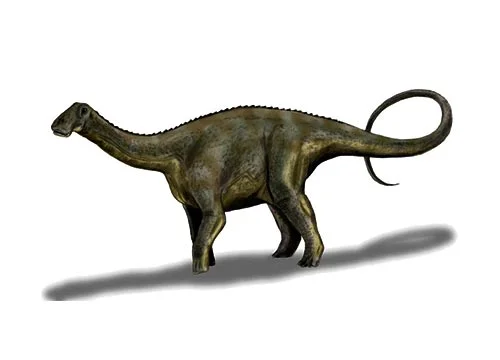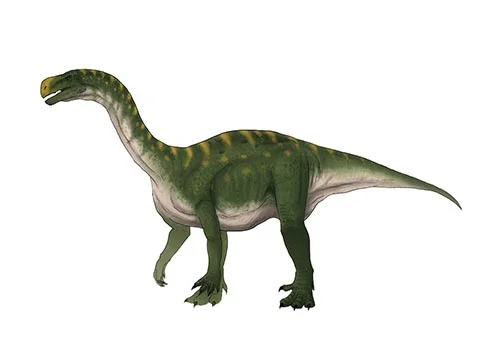Nigersaurus (Lizard from Niger)

Nee-jer-sore-us
Sereno, Beck, Dutheil, Larsson, Lyon, Moussa, Sadleir, Sidor, Varricchio, G.P. Wilson and J. A. Wilson - 1999
Herbivore
Estimated 9 meters long
Sauropod
N. taqueti (Type)
Africa, Niger, Elrhaz Formation
Late Cretaceous, 119-99 million years ago
Nigersaurus Facts
Nigersaurus was a genus of sauropod dinosaur that lived during the Late Cretaceous period, approximately 119-99 million years ago. Its fossils were first discovered in the Republic of Niger, from which it derives its name.
The lizard from Niger was a relatively small sauropod, measuring around 9 meters (30 feet) in length and weighing about 4 tons. It had a long neck and tail, with a short, narrow snout that was adapted for browsing on low-lying vegetation.
One of the most distinctive features of Nigersaurus was its rows of tiny, peg-like teeth, which were arranged in a straight line along the front of its jaws. These teeth were continuously replaced throughout the dinosaur’s life, allowing it to feed constantly on tough vegetation.
Nigersaurus is known from several partial skeletons and isolated bones, which have provided valuable information about its anatomy and behavior. For example, its fossils suggest that it had a wide, deep ribcage that may have allowed it to take in large amounts of air, facilitating its breathing and providing the oxygen it needed to sustain its massive body.
In conclusion, Nigersaurus was a unique and interesting dinosaur that lived during the Late Cretaceous period in what is now Niger. Its rows of tiny teeth and specialized jaw structure made it well-suited for browsing on low-lying vegetation, and its fossils serve as a valuable source of information about the diversity of life that existed on Earth millions of years ago. The study of dinosaurs like Nigersaurus helps us to better understand the history of our planet and the important role that these ancient creatures played in shaping the world as we know it today.



